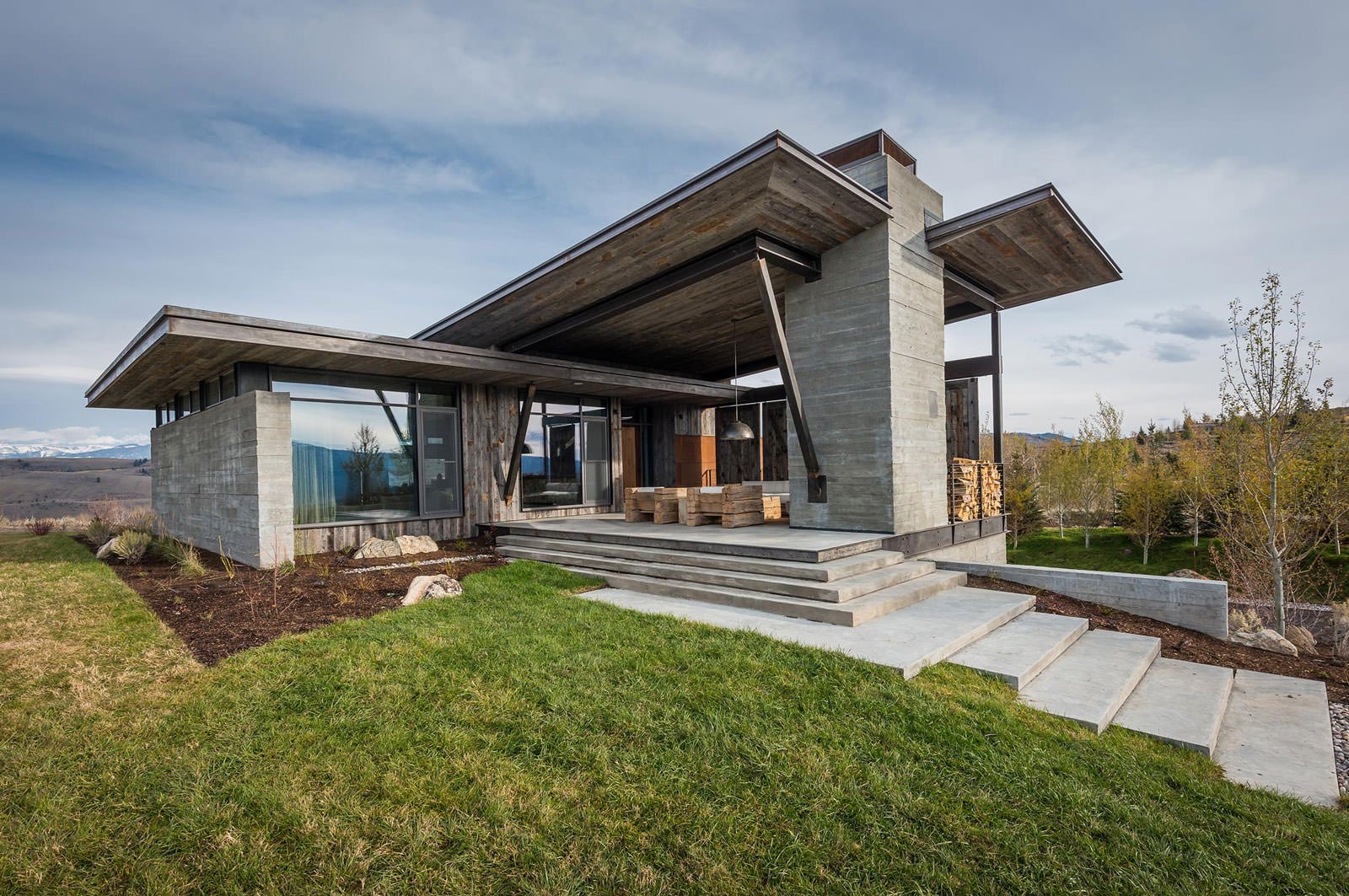#9108. Brutalist Façade with Cantilevered Overhangs: Harmony of Concrete and Wood in Modern Countryside Architecture
This is an impressive example of modern countryside architecture dominated by a combination of concrete and wood. The façade is characterized by bold geometry with dynamic projecting roof planes that create a floating effect above the main volume.
The foundation of the façade is made of monolithic concrete with pronounced formwork texture, giving the building a brutalist quality and tactility. Vertical concrete columns serve not only as structural elements but also as important visual dominants dividing the building's volume. The horizontal roof planes with wooden cladding on their undersides create an interesting contrast with the vertical concrete elements.
The façade glazing features panoramic windows that provide a visual connection with the surrounding landscape and fill the interior with natural light. The wooden elements of the façade – the cladding of some walls and ceiling surfaces – add warmth and organic quality to the brutalist concrete structure.
The thoughtful integration of the building into the landscape through a system of concrete steps and terraces deserves attention, as they create a smooth transition from architecture to the natural environment. The restrained landscaping of the plot emphasizes the architectural forms of the house.
In your own façade design, you can use similar techniques: contrasting combinations of brutalist and warm materials (concrete and wood), expressive cantilevered roof extensions, exposed structural elements, panoramic glazing considering orientation to cardinal directions, and integration of architecture into the landscape through terraces and steps at various levels.
